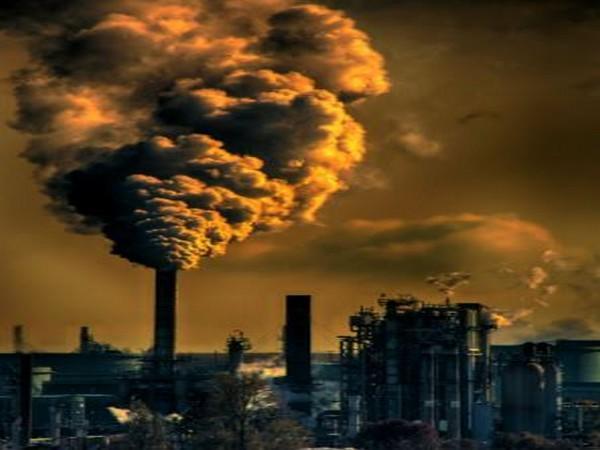Human health is getting affected due to Toxic Pollution.
keypoints:
Human health is getting affected.
Health is getting affected due to Toxic Pollution.
Nations that are most in danger of the effects of environmental change are regularly likewise the nations confronting the most noteworthy dangers of harmful contamination.
A worldwide group of scientists tracked down a solid and genuinely huge connection between the spatial appropriation of worldwide environment hazards and harmful contamination.
For over 30 years, researchers on the U.N’s. Intergovernmental Panel on Climate Change has zeroed in on human-initiated environmental change. Their fifth appraisal report prompted the Paris Agreement in 2015 and, not long after, an exceptional report on the risk of an Earth-wide temperature boost surpassing 1.5 degrees Celsius above pre-modern levels.
The Nobel Prize-winning group focused on that alleviating a dangerous atmospheric deviation “would make it notably simpler to accomplish numerous parts of feasible turn of events, with more noteworthy potential to destroy neediness and lessen imbalances.”
In a first-of-its-sort study that consolidates appraisals of the dangers of harmful outflows (e.g., fine particulate matter), nontoxic emanations (e.g., ozone-depleting substances), and individuals’ weakness to them, University of Notre Dame postdoctoral exploration partner Drew (Richard) Marcantonio, doctoral understudy Sean Field (humanities), Associate Professor of Political Science Debra Javeline and Princeton’s Agustin Fuentes (once of Notre Dame) tracked down a solid and genuinely huge connection between the spatial appropriation of worldwide environment hazard and poisonous contamination.
Nations that are most in danger of the effects of environmental change are frequently likewise the nations confronting the most noteworthy dangers of harmful contamination.
They likewise estimated different factors, including the connection of the spatial conveyance of harmful conditions, absolute mortality because of contamination, and environmental hazard, and they tracked down a solid interconnection. They write in their impending PLOS paper, “Worldwide dispersion and incident of contamination, environment effects, and wellbeing hazard in the Anthropocene”: “Passings coming about because of harmful contamination are most noteworthy where the circulation of poisonous contamination is most prominent and, basically, likewise where the effects of environmental change represent the most danger.”
“It’s anything but astounding to track down that these dangers are exceptionally corresponded, yet this article gives the information and examination to advise strategy, information, and investigation that was formerly missing,” Javelin said.
To finish the examination, Javelin, Marcantonio, Field, and Fuentes utilized information from three lists. First, ND-GAIN is a file of 182 nations that sums up a nation’s weakness and openness to environmental impacts and its availability to further develop environment versatility.
EPI positions 180 nations on 24 execution markers across 10 issue classifications covering natural wellbeing and environment imperativeness. In conclusion, GAHP gauges the number of poisonous contamination passes for a nation, including passings brought about by openness to harmful air, water, soil, and synthetic contamination internationally.
To make their outcomes the most worthwhile for policymakers, the writers made what they call “Focus on,” an action that consolidates a country’s environment impacts hazard, poisonous contamination hazard, and its expected preparation to moderate these dangers.
In light of these measures, the best ten nations they suggest focusing on are Singapore, Rwanda, China, India, Solomon Islands, Bhutan, Botswana, Georgia, the Republic of Korea, and Thailand.
Among those nations showing up at the lower part of the rundown are Equatorial Guinea, Iraq, Jordan, the Central African Republic, and Venezuela. These countries are destined to have remarkable administrations that right now hold up traffic adequately, tending to contamination.
“Eminently, our outcomes track down that the best 33% of nations in danger of poisonous contamination and environment impacts address more than 66% of the total populace, featuring the size of the issue and inconsistent circulation of natural danger. Given that an enormous bit of the total populace lives in nations at higher poisonous contamination and environment impacts hazard, getting where and how to focus in contamination hazard moderation is basic to expanding decreases of possible human mischief,” they compose.
The creators likewise note that by relieving harmful contamination in huge nations with high populaces like China and India, adjoining nations will likewise profit. For example, China’s Air Pollution and Prevention and Control Action Plan of 2013, which explicitly targets poisonous emanations, creates amazing outcomes. Scientists have tracked down a 40 per cent decrease in poisonous emanations since they also sanctioned the arrangement.
“Target is to feature where a movie can be made to diminish hazard to human wellbeing and prospering, however how that is focusing on is done-e.g., motivations versus sanctions – requires moral reflection to figure out what moves ought to be made and who should take them. This is particularly evident given the overall backwards connection between who is generally answerable for creating these dangers versus who is most in danger,” Marcantonio said.
During the 2021-22 scholastic year, the University, through its yearly Notre Dame Forum, will participate in a progression of discussions committed to the subject “Care for Our Common Home: Just Transition to a Sustainable Future.”
Roused by Laudato Si’ and Pope Francis’ proceeded with accentuation on these issues, the gathering will include a wide scope of conversations and occasions over the coming year.
Since its foundation in 2005, the Notre Dame Forum has highlighted significant discussions by driving experts on issues of significance to the University, the country, and the bigger world, including the difficulties and chances of globalization, the part of official discussions, movement, and the spot of confidence in a pluralistic culture.

























